The Matrix occupies an odd place in cinematic history, in that the mixed reception to the later installments tend to overshadow just how influential and groundbreaking that original 1999 movie was. Over twenty years after its original release, The Matrix remains one of the most engrossing, thought-provoking pieces of action/sci-fi storytelling in cinema, with a central plot that plays on cultural fears of rapidly advancing technology and a whole lot of Kung fu fighting for good measure. While The Matrix Reloaded and Revolutions failed to live up to their predecessor — which, in retrospect, was a pretty overwhelming task the Wachowskis probably would have had a difficult time accomplishing regardless — they’re still worthy and essential additions to the series, warts and all.
If it’s been a while since you’ve watched the Matrix trilogy, there’s a good chance you’ve forgotten just how jam-packed these movies are with Easter eggs and other fascinating secrets; a byproduct, no doubt, of the wide-ranging influences the Wachowskis were working with. Here are 20 hidden details you may not have noticed across all three Matrix films.
20. “In Memory of Thomas Anderson”
In the final scene of The Matrix Revolutions, the bench the Oracle sits on has a small dedication plate on it dedicated to an extraordinary person. The plate reads “In Memory of Thomas Anderson,” which of course is Neo’s given (Matrix) name. At least the scene is presented in a positive light, as it’s the only scene in the entire trilogy that features greenery and a blue sky, a deliberate visual design choice to help convey the artificiality of the Matrix.
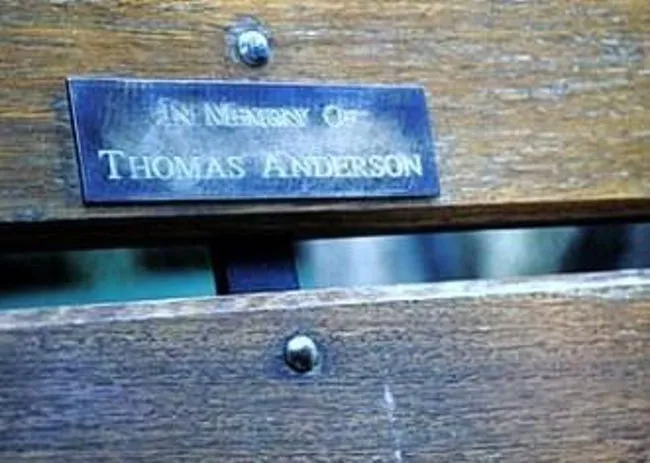 Source: Screenshot via Warner Bros.
Source: Screenshot via Warner Bros.19. Raindrop Codes
Sure, technically all the raindrops in The Matrix Revolution’s final fight between Neo and Smith are bits of code (they are in the Matrix, after all), but some of those drops were made to resemble literal single lines of Matrix code, similar to the ones we see on various “real world” displays throughout the trilogy.
The Wachowskis used this visual effect to help symbolize the Matrix’s destabilization. Naturally, it’s easier to see these code drops on something like an IMAX screen, but it’s also possible to see it in action on smaller televisions during close-ups of the fight scenes in which banded rain seems to jump like static.
 Source: Screenshot via Warner Bros.
Source: Screenshot via Warner Bros.18. Saudi Arabia
Neo finally makes it to the surface of the Earth in the finale of The Matrix Revolutions, traveling to the Machine City to broker a ceasefire with his A.I. enemies. Of course, the planet looks unrecognizable and you’d be hard-pressed to figure out where the Machine City is located on a map. While the film doesn’t explicitly reveal this information, we know based on information from The Animatrix that the Machine City’s real name is “Zero-One” and is located in Saudi Arabia’s Empty Quarter.
Though never mentioned by name, based on information from The Animatrix (2003) the Machine City is called “Zero-One” and located in the Empty Quarter in Saudi Arabia. This, as well as Zion as the last human settlement, would imply most of the main action of the film franchise takes place in the Middle East.
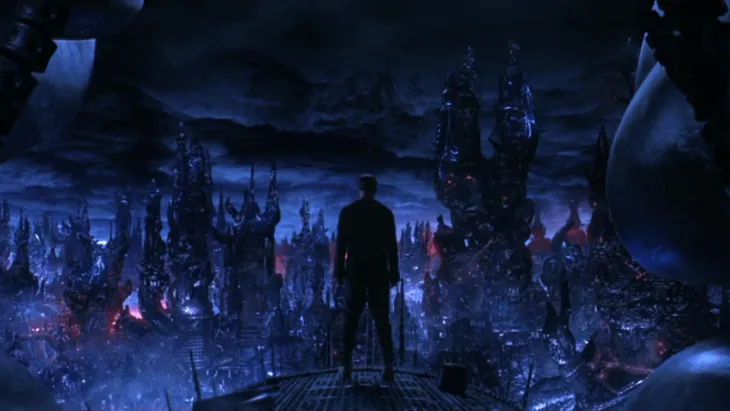 Source: Screenshot via Warner Bros.
Source: Screenshot via Warner Bros.17. Norse Connections
In addition to its many Biblical connections, the Matrix movies also draw on Norse mythology for inspiration. The Zion ship referred to as the Hammer is named Mjolnir, which as we all know (thanks to the Marvel Cinematic Universe) is the weapon of Thor, the Nordic God of Thunder. Mjolnir always returns to its master, with lighting and thunder sparking along the way, and Revolutions contains a nod to this when the ship returns to Zion (it’s master) with its lightning and thunder, which in this case is an EMP blast that disables the attacking Sentinals.
Additionally, the name of the climactic battle between Neo and Smith is “Neodämmerung,” derived from the German word Gotterdämmerung, which means “twilight of the gods.” This was the title of part of Richard Wagner’s opera “Der Ring des Nibelungen (“The Ring of the Nibelung”), based on the Norse story of Ragnarok, a final, fatal battle which destroyed the home of the gods and the gods themselves. Much like how Neo fights already knowing his fate, the Norse gods fought knowing they would ensure the survival of mankind. Interestingly, Wagner had a strong influence on the movie’s music, so this connection works on multiple levels.
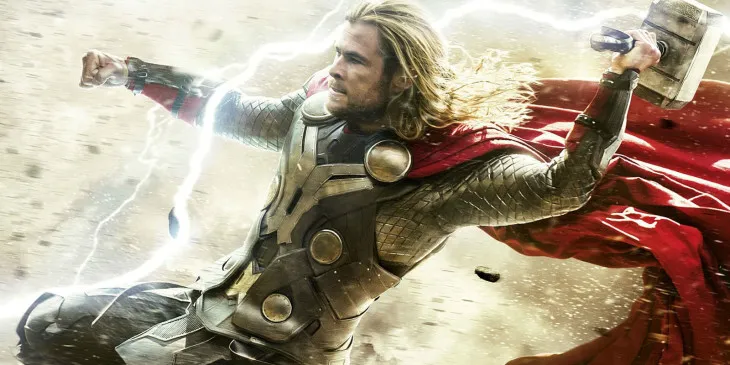 Source: via Marvel Studios
Source: via Marvel Studios16. Mobil Ave
The name of the train station Neo is stranded at the beginning of The Matrix Revolutions is called Mobil Ave and links the Machine World and the Matrix. The station’s name is significant, as Mobil is an anagram of Limbo, which is the traditional station between Heaven and Earth in Catholicism. And if you want to read further into things, there’s an additional subtext to the station name when you consider that Keanu Reeves is dyslexic.
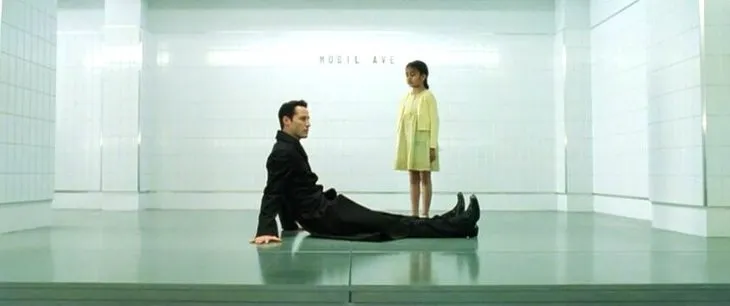 Source: Screenshot via Warner Bros.
Source: Screenshot via Warner Bros.15. Trinity’s Legit Hack
Computer hacking is one of those skills we just assume is portrayed inaccurately in movies — because well, it usually is — but The Matrix Reloaded holds the distinction of being the first major motion picture to show legitimate hacking in action. About two-thirds of the way through the film, Carrie Anne Moss’s Trinity disables a power grid by pulling off a genuine hack. Specifically, she runs “Nmap,” a widely-used freeware hacking tool that sends packets to a machine or network of machines in an attempt to determine what services are running.
Essentially, a Nmap port scan functions as a way of figuring out whether a system has any vulnerabilities to exploit. This is exactly how Trinity uses it too, as her computer clearly shows Nmap being run against the IP address 10.2.2.2. and finding open port number 22. She then summons a program called “sshnuke,” which begins “attempting to exploit SSHv1 CRC32,” an exploit that was discovered by in February 2001 by security analyst Michal Zalewski. This scene earned praise from hackers for actually getting hacking right … even if there were some errors, such as the film changing the text of Nmap’s output to make it fit better on the screen.
 Source: Screenshot via Warner Bros
Source: Screenshot via Warner Bros14. The Keymaker’s Biblical Reference
During the scene in which the Keymaker discusses the plan for how to get Neo to the source, he mentions that the team will have to knock out 27 blocks of power, leaving them with exactly 314 seconds before the power beings to reroute. Unsurprisingly, this is yet another Biblical reference; specifically, the 27th book of the New Testament (Revelation), in which 3:14 speaks of witnessing the source of creation (in the Matrix universe, this would be the Architect).
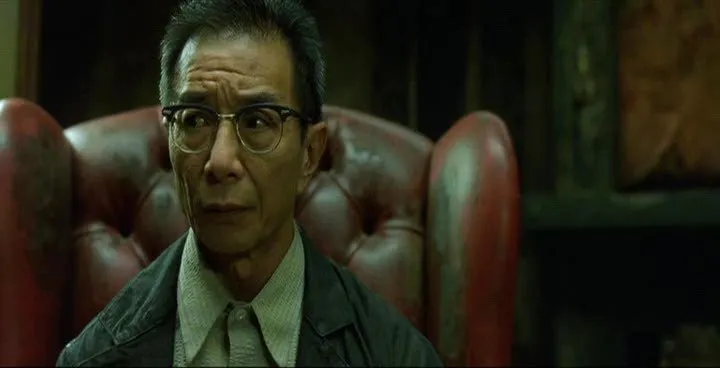 Source: Screenshot via Warner Bros
Source: Screenshot via Warner Bros13. Greek Mythology Connections
The Wachowskis borrow liberally from religious texts, pop culture, and the humanities at large in the Matrix movies, but some of the most explicit connections are to Greek mythology. Neo (which is also an anagram for “One”) is Ancient Greek for “new”; Morpheus is the name for the “god of dreams and sleep,” which is actually somewhat ironic considering Morpheus has the exact opposite role and awakens people from their dream states; and the entire Matrix storyline is a sort of retelling of the myth of Prometheus (Neo), the demigod who stole fire from the gods (the makers/keepers of the Matrix).
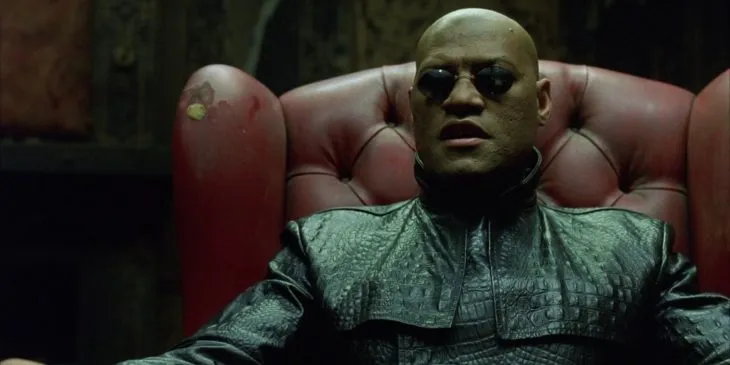 Source: Screenshot via Warner Bros.
Source: Screenshot via Warner Bros.12. Agent Smith’s License Plate
When Agent Smith pulls up in an Audi at the beginning of The Matrix Reloaded, his license plate reads IS 5415. This is a clear reference to Isaiah 54:16 in the King James Bible, which reads, “Behold, I have created the smith that bloweth the coals in the fire, and that bringeth forth an instrument for his work, and I have created the waster to destroy.” Seeing as how he spends the next two movies essentially laying waste to the Matrix by infecting it all like a virus, we’d say this Biblical quote is apt.
 Source: Screenshot via Warner Bros
Source: Screenshot via Warner Bros11. The Hoverships
There are a total of twelve hover ships in Zion’s fleet, and each one is named after a figure or item of antiquity. We’ve already talked about Mjolnir (the Hammer), but the other eleven are as follows: Nebuchadnezzar (piloted by Morpheus); Osiris (Thadeus); Logos (Niobe); Caduceus (Ballard); Gnosis (Ice); Vigilant (Soren); Icarus (Ajax); Brahma (Kali); Novalis (Tirant). The other two ships are only revealed in concept artwork and are called the Ganesha and the Vishnu.
10. 19 Month Timeframe
With the way the Matrix trilogy plays with time and reality, it’s surprising to realize that there’s a canonical time frame for everything. When Trinity and Cypher first speak, the “Trace Program” has a date of 2-19-98. Near the end of The Matrix Revolutions, when Neo is seen talking on the phone, the same trace program reads 9-18-99. This means that from the time we first meet Mr. Anderson toiling away in an office to when he saves the world, 19 months have passed. Of course, those dates only correspond to the Matrix itself, as the real world is set in the year 2199.
 Source: Screenshot via Warner Bros.
Source: Screenshot via Warner Bros.9. The Opening Scores For Each Film Were In Different Keys
Each installment in the Matrix Trilogy begins with the same introductory theme music (the rousing strings and horn blasts), but with some key differences (literally). The theme’s key ascends by one semitone with each movie: The Matrix is in the key of E, The Matrix Reloaded is in F, and The Matrix Revolutions is in the key of F-sharp. Composer Don Davis paid close attention to the use of reflection in The Matrix when composing his scores, and also shifted the balance of the score’s orchestral, choral, and synthesizer elements depending on whether humans or machines are the dominant subjects of a given scene.
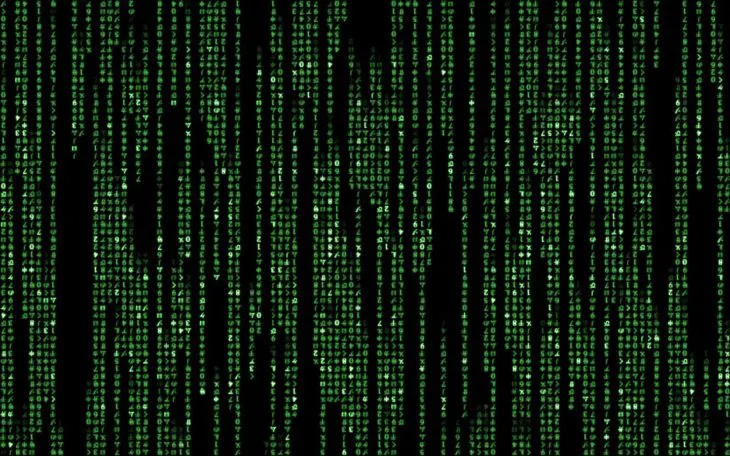 Source: Screenshot via Warner Bros
Source: Screenshot via Warner Bros8. Neo Runs Past A Television Playing The Prisoner TV Series
It kind of goes without saying at this point that the actual Matrix computer program is framed as prison humanity must escape from, so it’s hardly surprising that the films contain relevant imagery. One such instance occurs just after Neo’s first clash with Agent Smith at the subway station, as he’s making a mad dash through the city to return to the real world. If you freeze the frame at the point where Neo runs past a television in one of the apartments, an episode of the classic TV series The Prisoner, which ran for one season in 1967 and dealt with a man trapped in a strange reality (in this case, a former secret agent is abducted and imprisoned in a mysterious coastal village). Another interesting connection is that both The Matrix and The Prisoner’s protagonists are named after numbers: Neo (One) and Number Six, respectively.
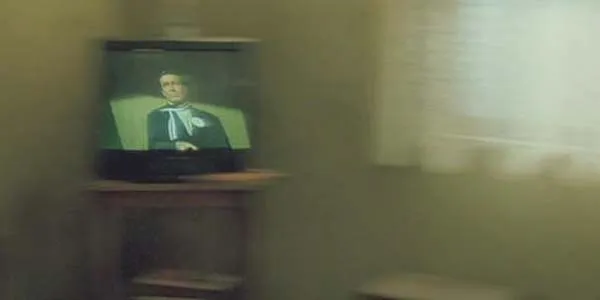 Source: Screenshot via Warner Bros
Source: Screenshot via Warner Bros7. Deliberate Lack of Color
This was touched on earlier in regards to the final scene of the trilogy is the only one featuring sunlight and a blue sky, but the Wachowskis were so adamant that the Matrix be as lifeless and artificial-looking as possible that they actually worked with Oakland city officials to remove all red and blue colors from any shooting locations in the city’s downtown. This meant that things like sidewalk curbs had to be pained over and going a step further, there could be no greenery or plant life visible in the frame, so filming took place over the winter before tree leaves sprouted in the spring.
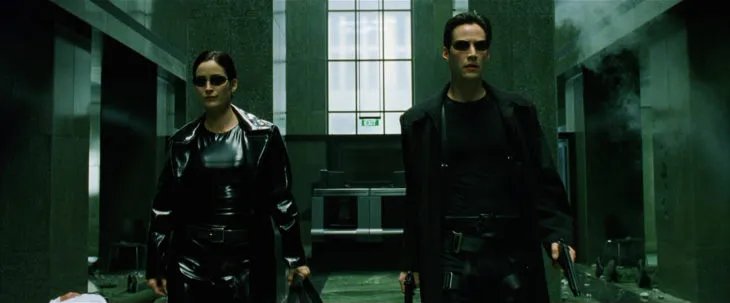 Source: Screenshot via Warner Bros
Source: Screenshot via Warner Bros6. That Bruce Lee Nose Rub
The Matrix revolutionized action filmmaking and a lot of that can be attributed to the film’s blending of martial arts fight sequences with more Western-style action staples, such as extended gun battles. It’s also a film in which the lead actors did many of their stunts, which required months of extensive martial arts training before the cameras even started rolling. Pretty much everyone suffered an injury of some sort throughout the filming of all three movies, but Keanu Reeves had a particularly rough time on the set of the first movie.
During his four months of training, he injured his spine and was unable to perform many kicks. One of the biggest influences on the film’s fight scenes – particularly the dojo brawl between Neo and Morpheus – is Bruce Lee, so much so that Neo rubs his nose with his thumb in a similar fashion as Lee used to do; no doubt an show of respect on Reeves’s part to the martial arts master and the grueling effort required to train for such a role.
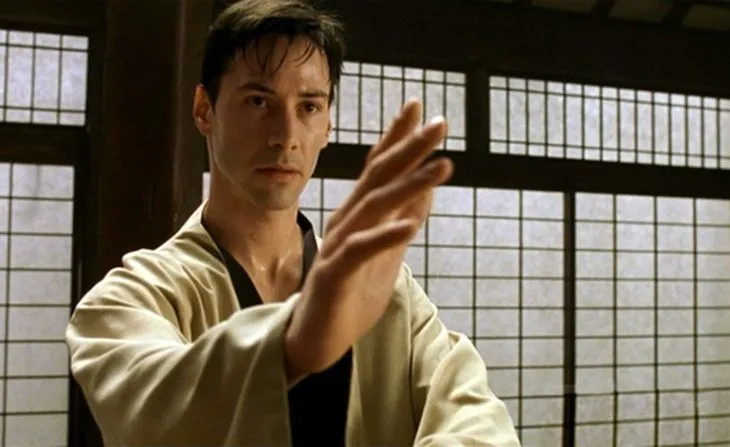 Source: Screenshot via Warner Bros
Source: Screenshot via Warner Bros5. Multiple Twins
One of the most interesting details in the original Matrix involves a scene during protagonist Neo’s (Keanu Reeves) training. Taking place on a crowded street within the life-like Matrix computer program, the scene is meant to show Neo how the Matrix works, as he is distracted by a woman in a red dress who stands out from the crowd. The Wachowskis went one step further by putting doppelgangers of every single extra in the scene – and did so without CGI! Numerous identical twins were used for the scene, which is just a crazy amount of detail to put into something that most people would never even notice.
 Source: Screenshot via Warner Bros.
Source: Screenshot via Warner Bros.4. Neo’s Questions
Before taking the red pill and freeing his mind, Neo is a man who can’t help but question his reality. This is the driving force of the narrative, but did you ever notice just how many questions Neo asks? Quite a few, it turns out. In the first 45 minutes or so of The Matrix, Keanu Reeves has 80 lines, 44 of which are questions. This means that over half of his dialogue is just asking people things, which averages out to roughly one question per minute. “Whoa” indeed, Neo.
 Source: Screenshot via Warner Bros
Source: Screenshot via Warner Bros3. The Film’s Art Director’s Name in Anderson’s Criminal Record
The interrogation scene with Agent Smith and Thomas Anderson/Neo has some pretty cool Easter eggs, such as the monitors at the beginning of the scene being the same ones lining the walls of the Architect’s room in The Matrix Reloaded. When Smith starts reading from the papers in front of him about Thomas Anderson’s life in the Matrix, a close inspection of the text will reveal that his mother’s name is Michelle McGahey. In real life, McGahey served as the art director on The Matrix and was not, as far as we know, Keanu Reeves’s mother.
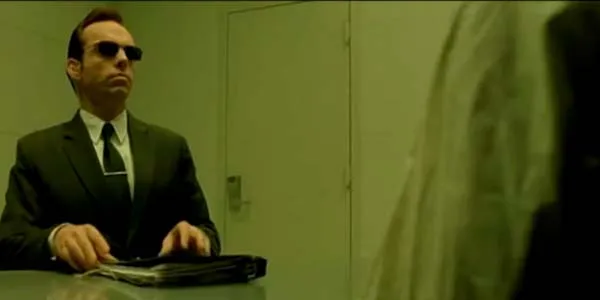 Source: Screenshot via Warner Bros
Source: Screenshot via Warner Bros2. Simulacra And Simulation
When Neo first learns about the true nature of the Matrix, Morpheus shows him what the real world looks like and uses the expression, “Welcome to the desert of the real.” Here, Morpheus is paraphrasing the writings of Jean Baudrillard’s Simulacra and Simulation, a philosophical text that shows up in an earlier scene. Neo himself owns it when he’s still going by the name Thomas Anderson. The book appears in the nightclub scene, as Neo opens his copy and reveals a secret compartment inside. The book itself had a significant impact on the film, so much so that the Wachowskis gave a copy to Keanu Reeves and told him to read it as preparation before he even had a chance to read the script.
 Source: Screenshot via Warner Bros
Source: Screenshot via Warner Bros1. Room 101
Neo’s apartment number is 101, but this wasn’t just so it would be easy for him to remember! That number can be read as a nod to George Orwell’s 1984 and its own Room 101 housed in the Ministry of Love. This is the room where protagonist Winston Smith is tortured by the Thought Police, as the room is designed to institutionalize inmates by exploiting their worst fears and forcing them to confront them. While Neo doesn’t have any rat cages strapped to his face, his drab, hopeless surroundings certainly fall in line with the spirit of Room 101, and are soul-crushing in a different sort of way. The 1984 theme is picked up later in The Matrix Reloaded, when Neo, Morpheus, and Trinity meet the Merovingian. They have to first walk through a hallway with ‘101’ posted at the front, which alludes to the fact that they have been betrayed and their lives are at risk.
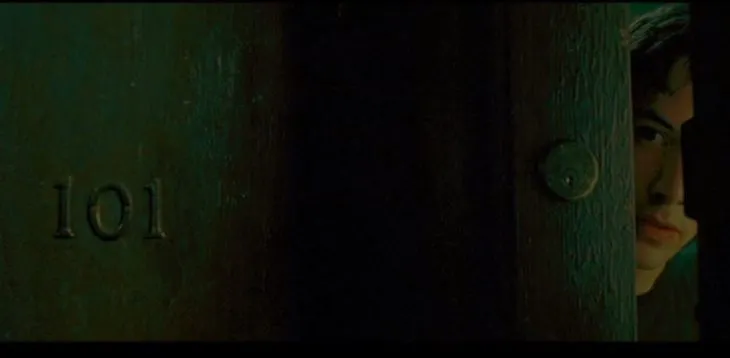 Source: Screenshot via Warner Bros
Source: Screenshot via Warner Bros